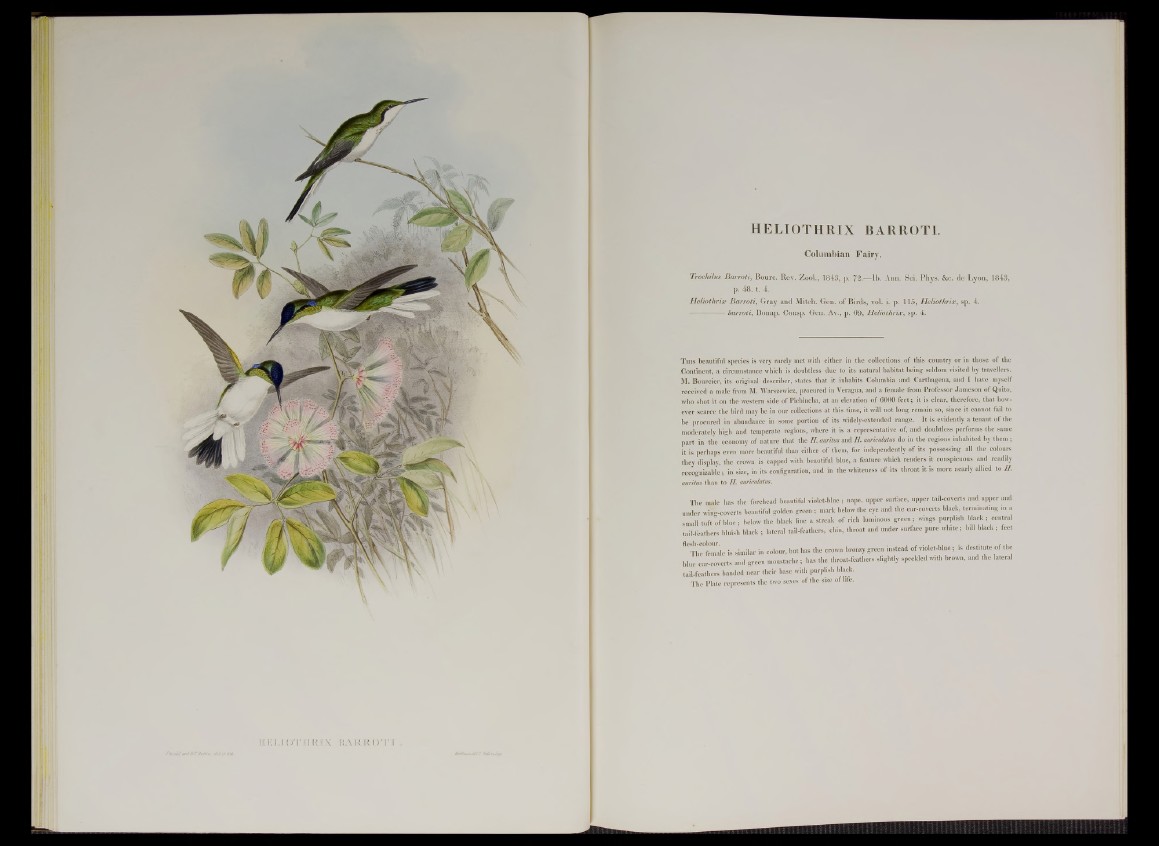
HELIOTHRIX BARROTI.
Columbian Fairy.
Trochilus JBarroti, Bourc. Rev. Zool., 1843, p. 7&—lb . Ann. Sci. Phys. &c. de Lyon, 1843,
p. 48. t. 4.
Heliothrix JBarroti, Gray and Mitch. Gen. o f Birds, vol. i. p. 115, Heliothrix, sp. 4.
---------------barroti, Bonap. Consp. Gen. Av., p. 69, Heliothrix, sp. 4.
T his beautiful species is very rarely met with either in the collections- of this country or in those of the
.Continent, a circumstance which is doubtless due to its natural habitat being seldom visited by travellers.
M. Bourcier, its original describer, states that it inhabits Columbia and Carthagena, and I have myself
received a male from M. Warszewicz, procured in Veragua, and a female from Professor Jameson of Quito,
who shot it on the western side of Pichincha, at an elevation of 6000 feet; it is clear, therefore, that however
scarce the bird may be in our collections at this time, it will not long remain so, since it cannot fail to
be procured in abundance in some portion of its widely-extended range. It is evidently a tenant of the
moderately high and temperate regions, where it is a representative of, and doubtless performs the same
part in the economy of nature that the H. auritus and H. auriculatus do in the regions inhabited by them ;
it is perhaps even more beautiful than either of them, for independently of its possessing all the colours
they display, the crown is capped with beautiful blue, a feature which renders it conspicuous and readily
recognizable; in size, in its configuration, and in the whiteness of its throat it is more nearly allied to H.
auritus than to H. auriculatus.
The male has the forehead beautiful violet-blue; nape, upper surface, upper tail-coverts and upper and
under wing-coverts beautiful golden green ; mark below the eye and the eav-coverts black, terminating in a
small tuft of blue ; below the black line a streak of rich luminous green; wings purplish black ; central
tail-feathers bluish black ; lateral tail-feathers, chin, throat and under surface pure white; bill black ; feet
fleTbe°female is similar in colour, but has the crown bronzy green instead of violet-blue; is destitute of the
blue ear-coverts and green moustache; has the throat-feathers slightly speckled with brown, and the lateral
tail-feathers banded near their base with purplish black.
The Plate represents the two sexes of the size of life.